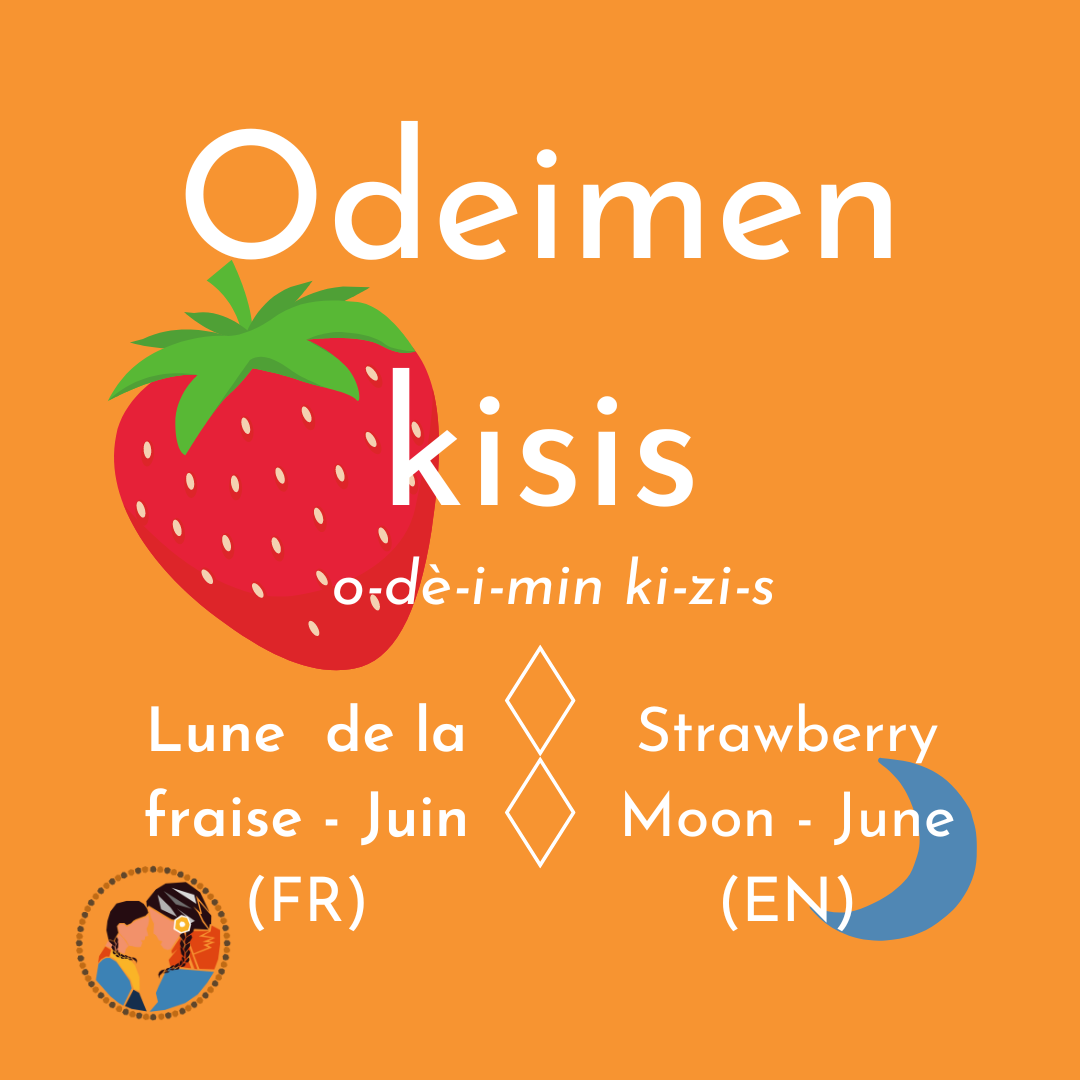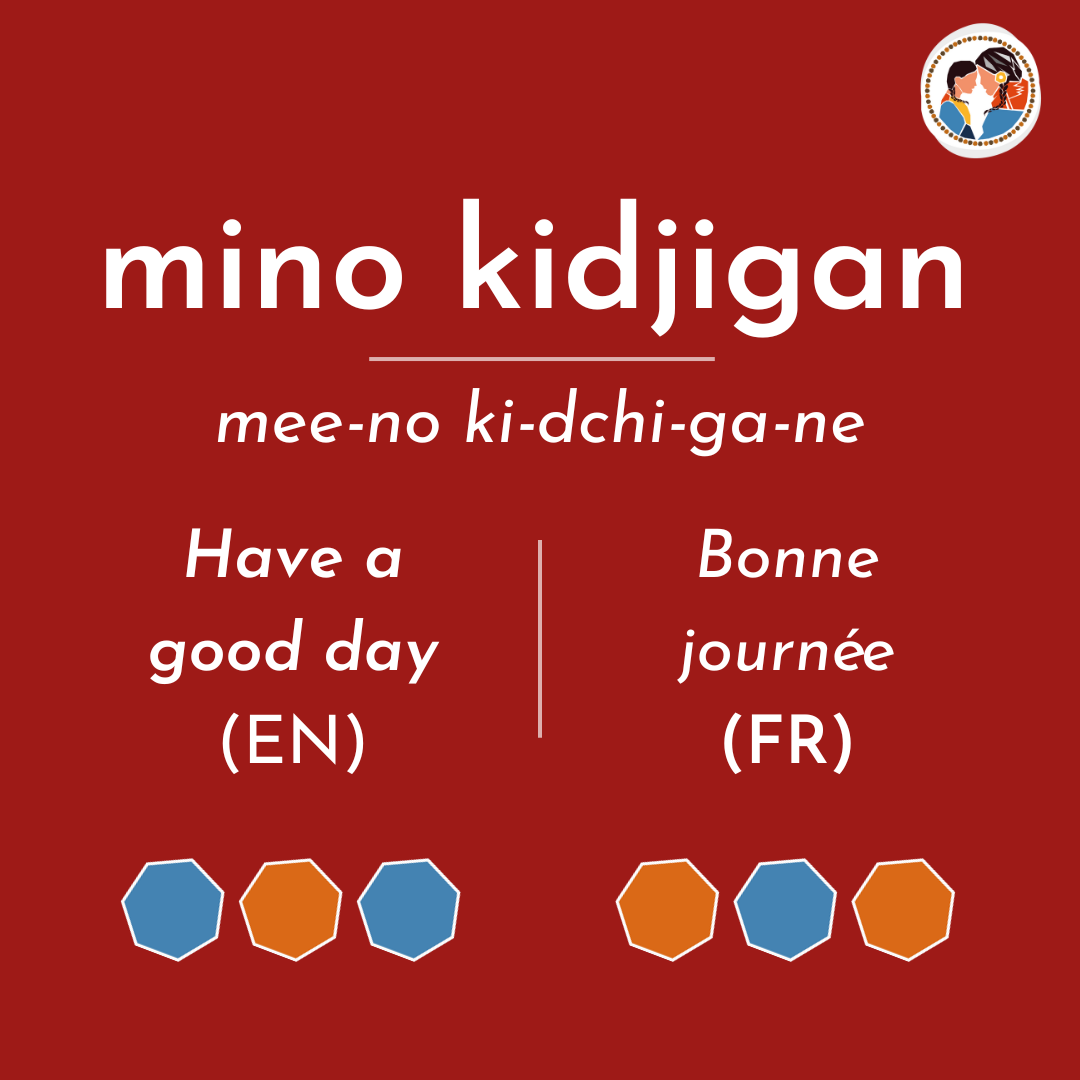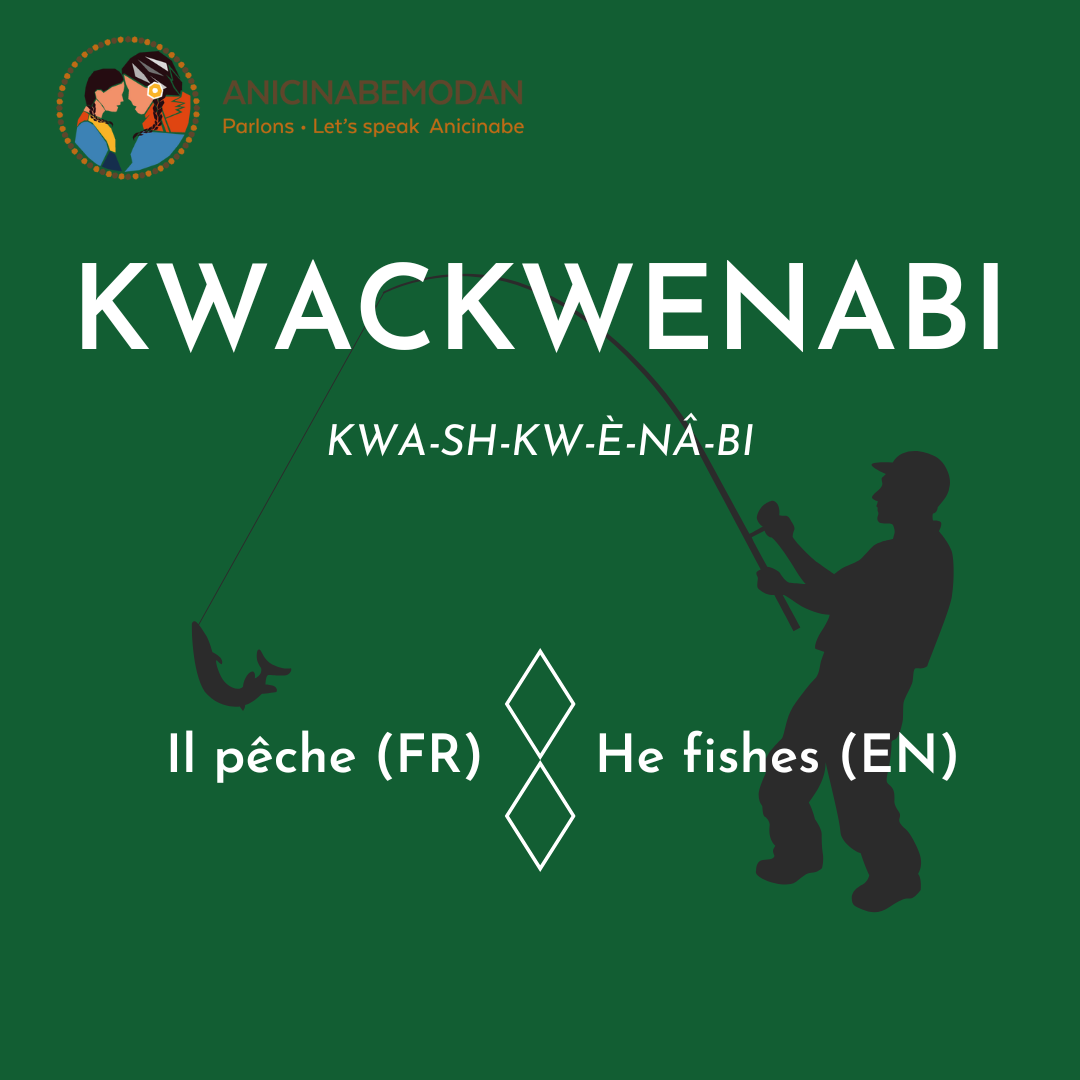International Decade of Indigenous Languages
International Decade of Indigenous Languages
2022-2032


« The Anicinabe language – Anicinabemowin – links us to a particular territory. Like all indigenous languages, it is born out of contact between the land, the trees, the animals, everything that surrounds us, and our spirits. Its roots are anchored in Mother Earth, and although our language comes from a territory, it allows us to carry that territory with us, through our identity.” »
“The Anicinabe language – Anicinabemowin – links us to a particular territory. Like all indigenous languages, it is born out of contact between the land, the trees, the animals, everything that surrounds us, and our spirits. Its roots are anchored in Mother Earth, and although our language comes from a territory, it allows us to carry that territory with us, through our identity.”
– Richard Ejinagosi Kistabish
– Richard Ejinagosi Kistabish
A decade of actions
A decade of actions
Minwashin wants to take action over the next ten years. Because our language is an essential right, and it’s everyone’s responsibility to act to protect and revitalize it.
Here’s our memorandum to ensure that our language is revitalized and protected.
Phase 1
RECOGNITION AND VALORIZATION
- Launch of the decade
- Celebration of February 21: Anicinabe Language Day
- Community tour with NIN exhibition on the Anicinabe language
- Valuing speakers and language
- Create a language task force
- Production of 5 video vignettes to promote and showcase the language and its speakers
Phase 2
REPAIR AND RESTITUTION
- Enhance available resources
- Develop tools for communities, allies and partners
- Support pilot projects to revitalize the language
- Share experiences, learnings and results
- Develop language research and documentation, translation and teaching methods
- Develop digital tools to promote the language
Phase 3
AUTONOMY AND TRANSMISSION
To live and transmit our culture and language freely within our territory. To think autonomously and sovereignly about the trajectory of our nation and our communities.



Exhibition on
Anicinabe language
Spring and Fall 2022
To launch the decade, Minwashin has developed and produced an exhibition on the Anicinabe language: NIN. It’s a nomadic exhibition designed to share the Anicinabe worldview, and to inspire interest and pride among young Anicinabek in their identity, language and ancestral heritage.
Exhibition on
Anicinabe language
Exhibition on
Anicinabe language
Spring and Fall 2022
To launch the decade, Minwashin has developed and produced an exhibition on the Anicinabe language: NIN. It’s a nomadic exhibition designed to share the Anicinabe worldview, and to inspire interest and pride among young Anicinabek in their identity, language and ancestral heritage.
NIN in Paris
NIN in Paris
The NIN vernissage took place in Paris in the Miró exhibition hall at UNESCO headquarters. It was a highly symbolic moment to kick off the decade with an exhibition on anicinabemowin in this place of protection for the world’s cultures and languages
NIN on tour
throughout the territory
NIN on tour
throughout the territory
Following this vernissage, NIN returned to the Anicinabe territory, visiting nine Anicinabek communities in the Abitibi-Témiscamingue and Outaouais regions, as well as two cities (Senneterre and Val-d’Or), and was exhibited in two regional exhibition centers (Ville-Marie during the summer of 2022 and Amos during the summer of 2023).

Creation of a Task Force
(spring 2023)
Minwashin has set up a language task force to bring together stakeholders from across the territory and from several communities to discuss and share issues and revitalization efforts in their communities.
Led by Anna Mapachee, the task force’s mission is to work together to highlight the language resources available and to consider ways of working together to establish protected spaces for language in all communities. She went to meet the members of this working group in their communities, and then organized a day of discussion in person, in Val-d’Or.
Videos
Because our language has an oral tradition, it’s more a matter of listening than writing. It’s important to us that people hear it and can read its translation, through video capsules.
Videos
Because our language has an oral tradition, it’s more a matter of listening than writing. It’s important to us that people hear it and can read its translation, through video capsules.
Funny radio vignettes
Funny radio vignettes
Humor is one of the best ways to learn the language. These capsules were transmitted to the seven Anicinabek radio stations, so that they could broadcast them, and so that everywhere on the great Anicinabe Aki, we could hear the language.
Word of the Week
Word of the Week
A small effort can make a big difference. Learning one word a week is the beginning of a larger movement.
















